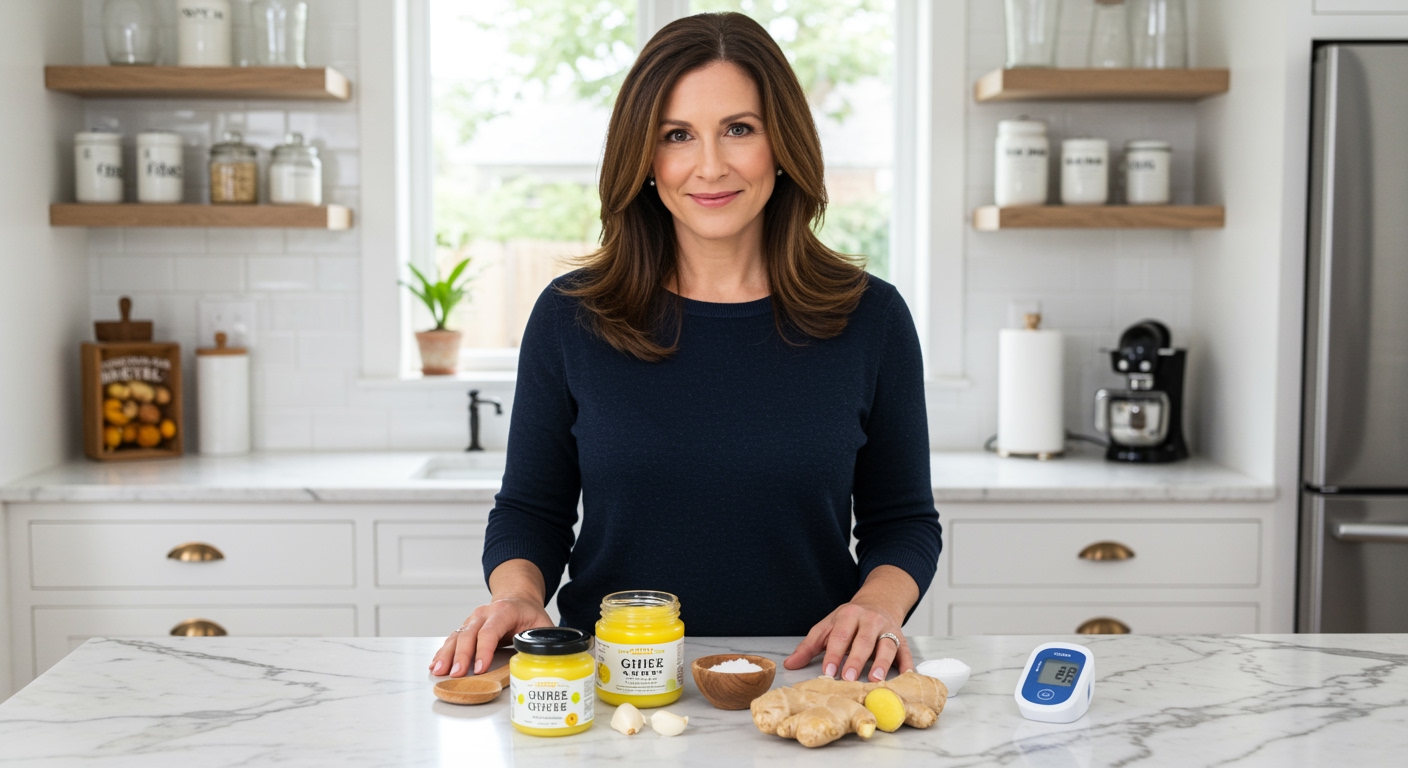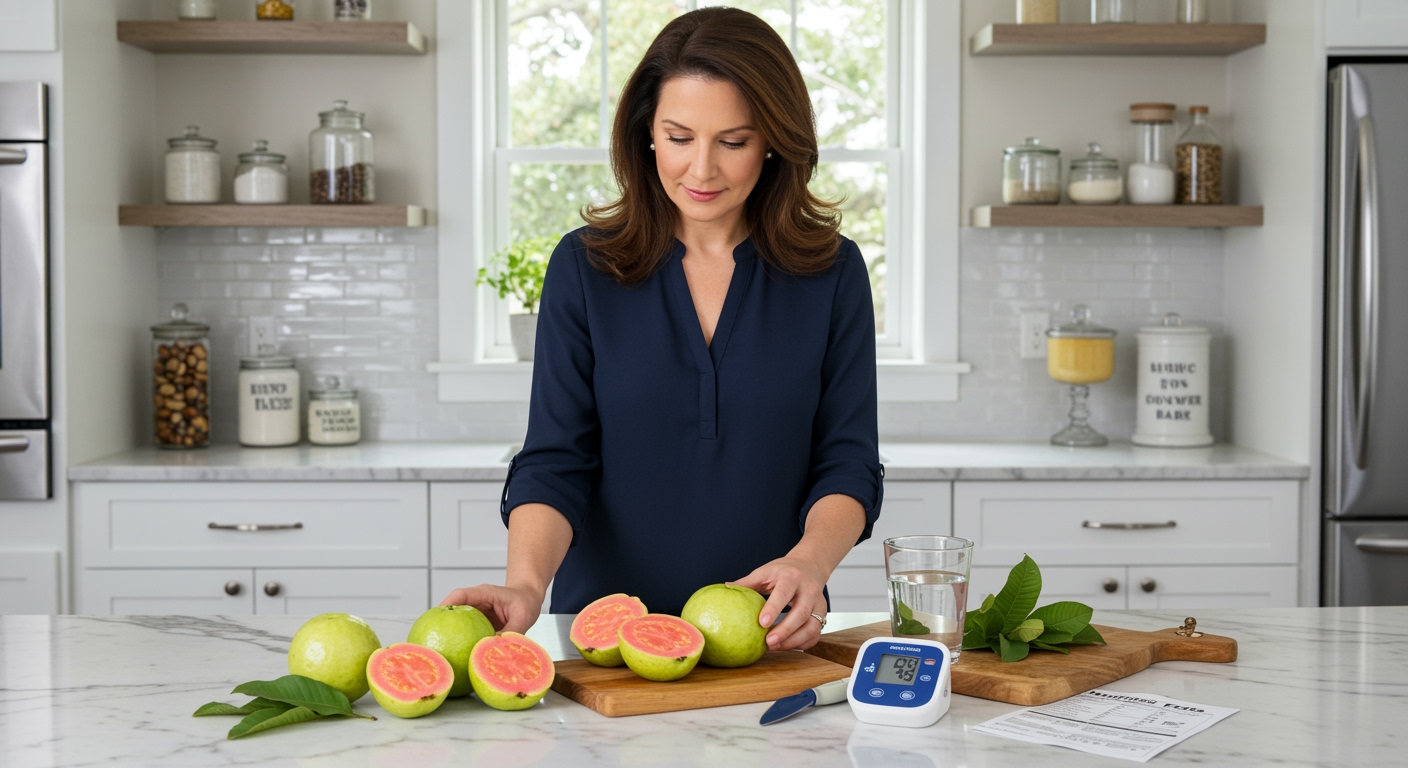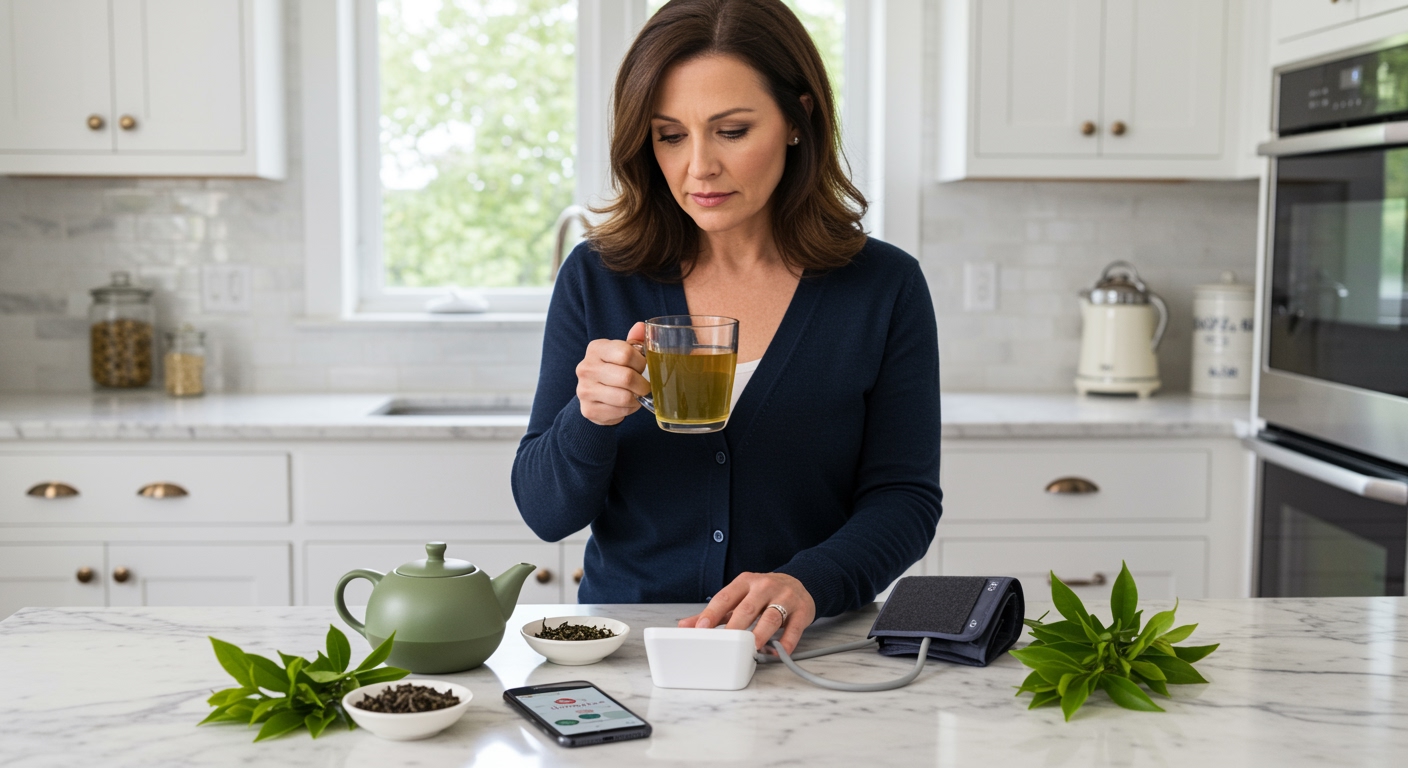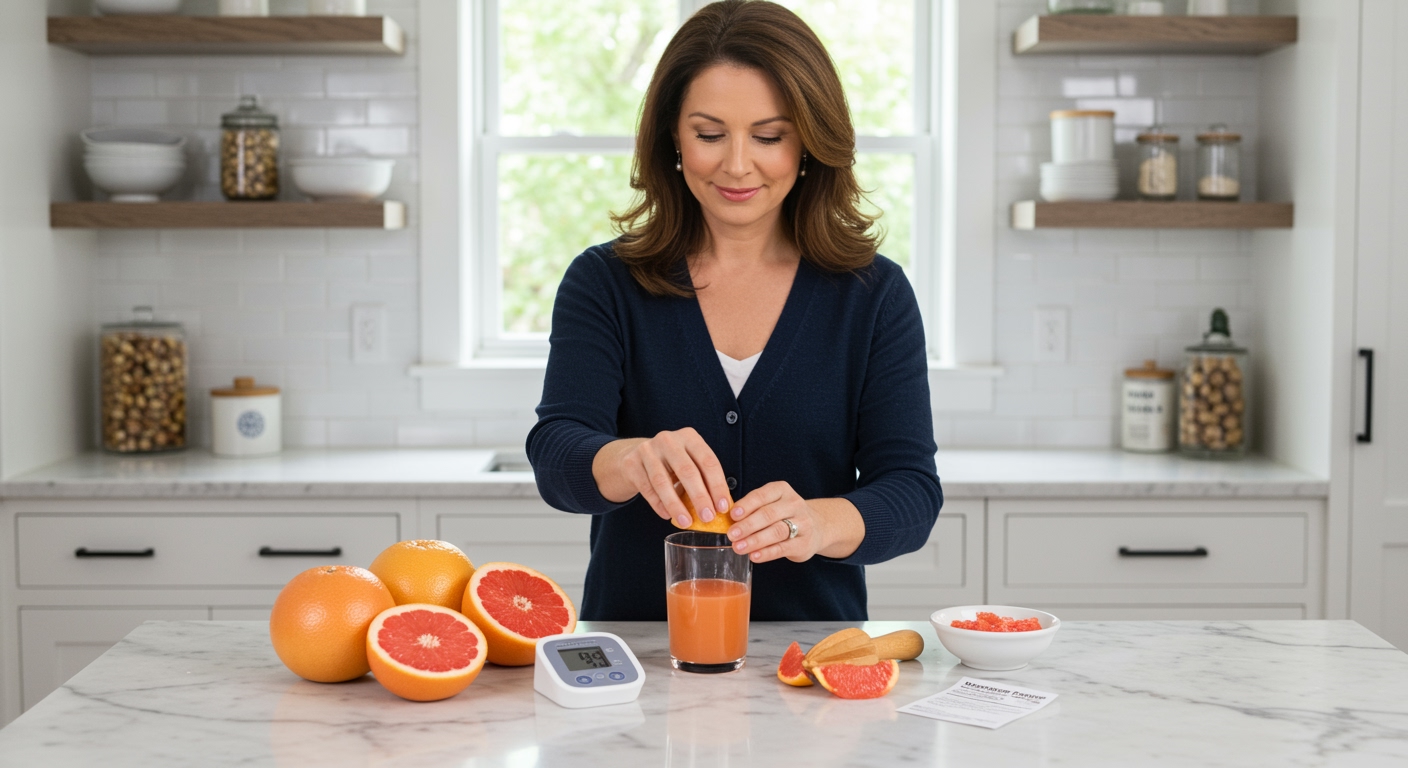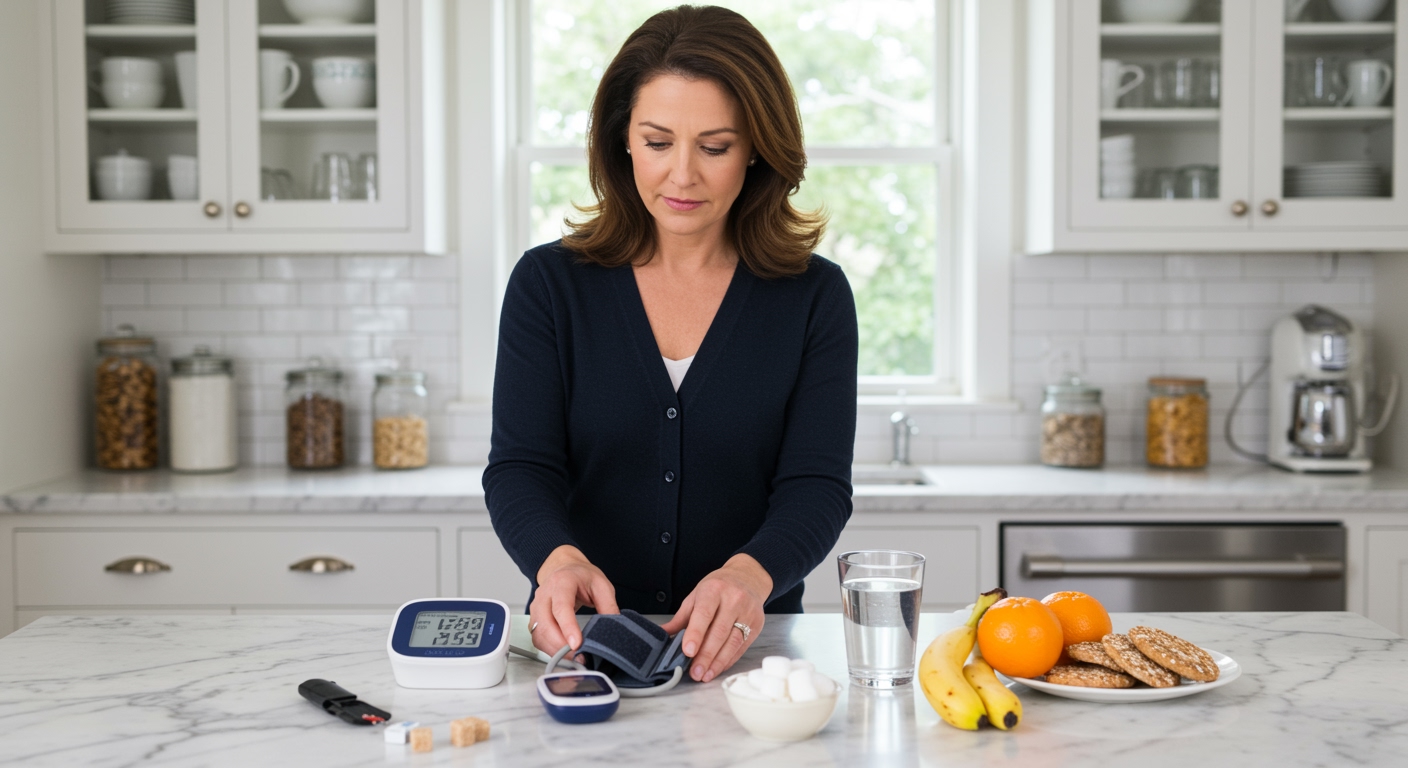✪ Key Takeaway: Ghee can help low blood pressure by providing healthy fats that support hormone production and circulation.
Introduction
Your doctor mentions low blood pressure during your checkup and suddenly you start questioning every food choice you make.
You might be wondering if that spoonful of ghee in your morning routine could actually help or hurt your already low blood pressure readings.
Hi, I’m Abdur, your nutrition coach and today I’m going to explain how ghee affects low blood pressure and whether this traditional fat deserves a place in your daily diet.
What Makes Ghee Different From Regular Butter?
Ghee stands apart from regular butter because of its unique preparation process that removes water and milk solids.
This clarification process creates a pure fat that contains higher concentrations of fat-soluble vitamins A, D, E, and K compared to regular butter.
The removal of milk proteins makes ghee suitable for people with lactose intolerance who might otherwise avoid dairy-based fats.
Ghee contains approximately 60% saturated fats, 25% monounsaturated fats, and 5% polyunsaturated fats, creating a stable fat profile that resists oxidation.
This stability means ghee can withstand higher cooking temperatures without breaking down into harmful compounds that might affect your cardiovascular system.
The concentration of nutrients in ghee also means you need smaller amounts to get the same nutritional benefits compared to regular butter.
✪ Fact: One tablespoon of ghee contains about 112 calories and provides fat-soluble vitamins your body needs for hormone production.
How Does Low Blood Pressure Affect Your Body?
Low blood pressure, or hypotension, occurs when your blood pressure readings consistently fall below 90/60 mmHg.
This condition means your heart is not pumping blood with enough force to adequately supply your organs and tissues with oxygen and nutrients.
Common symptoms include dizziness, fatigue, nausea, and fainting spells that can significantly impact your daily activities.
Your body requires adequate blood pressure to maintain proper circulation, especially when you change positions from sitting to standing.
Low blood pressure can result from dehydration, certain medications, heart problems, or nutritional deficiencies that affect your cardiovascular system.
Understanding the root cause of your low blood pressure helps determine whether dietary changes like adding ghee might provide beneficial support.
✪ Note: Always consult your healthcare provider before making significant dietary changes if you have diagnosed low blood pressure.
Can Ghee Actually Support Healthy Blood Pressure?
Ghee contains several compounds that may support healthy blood pressure through different mechanisms in your body.
The saturated fats in ghee help your body produce hormones like aldosterone, which regulates sodium and water balance in your kidneys.
Proper hormone production supports your body’s natural ability to maintain adequate blood pressure levels throughout the day.
Ghee also provides fat-soluble vitamins that support cardiovascular health, including vitamin K2 which helps prevent arterial calcification.
The stable fat profile in ghee means it does not contribute to inflammatory processes that might damage blood vessels over time.
Research suggests that moderate consumption of traditional fats like ghee may support overall cardiovascular function when part of a balanced diet.
However, the key lies in consuming ghee in appropriate amounts rather than unlimited quantities that could lead to other health issues.
✪ Pro Tip: Start with one teaspoon of ghee daily and monitor how your body responds before increasing the amount.
What Amount of Ghee Works Best for Low Blood Pressure?
The optimal amount of ghee for supporting low blood pressure depends on your overall diet, activity level, and individual health status.
Most nutrition experts recommend starting with one to two teaspoons of ghee daily, which provides approximately 40-80 calories from healthy fats.
This amount supplies enough fat-soluble vitamins and healthy fats to support hormone production without overwhelming your digestive system.
You can gradually increase to one tablespoon daily if you tolerate smaller amounts well and notice positive effects on your energy levels.
The timing of ghee consumption matters too – having it with meals helps your body absorb fat-soluble vitamins more effectively.
Morning consumption often works well because it provides sustained energy and supports hormone production throughout the day.
Remember that ghee should complement a balanced diet rich in vegetables, whole grains, and adequate hydration for optimal blood pressure support.
✪ Fact: Your body needs about 20-35% of daily calories from fats, and ghee can contribute to this requirement while supporting cardiovascular health.
Are There Any Risks of Using Ghee for Low Blood Pressure?
While ghee offers potential benefits for low blood pressure, certain individuals should approach its use with caution.
People with existing heart disease or high cholesterol should consult their healthcare provider before adding significant amounts of ghee to their diet.
Excessive consumption of any fat, including ghee, can lead to weight gain which might create additional strain on your cardiovascular system.
Some individuals may experience digestive discomfort when first introducing ghee, especially if they have been following a very low-fat diet.
Quality matters significantly – choose organic, grass-fed ghee to avoid potential contaminants that might affect your overall health.
Monitor your blood pressure regularly when making dietary changes to ensure the additions are supporting rather than hindering your health goals.
If you notice any negative symptoms like increased fatigue, digestive issues, or worsening blood pressure readings, reduce or eliminate ghee and consult your healthcare provider.
✪ Note: Quality ghee should be golden in color, have a pleasant nutty aroma, and come from reputable sources that test for purity.
The Bottom Line
Ghee can be a beneficial addition to your diet if you have low blood pressure, providing healthy fats that support hormone production and cardiovascular function.
The best nutrition approach combines traditional wisdom with modern understanding, and ghee represents this balance perfectly.
I would love to hear about your experiences with ghee and low blood pressure, so please share your questions or feedback in the comments section below.
References
At NutritionCrown, we use quality and credible sources to ensure our content is accurate and trustworthy. Below are the sources referenced in creating this article:
